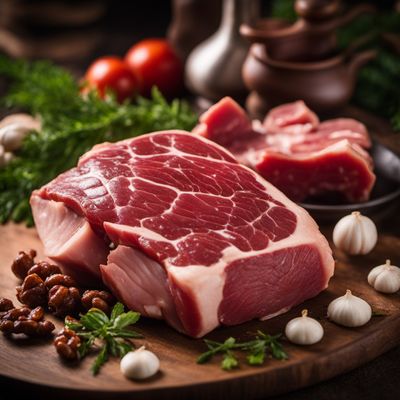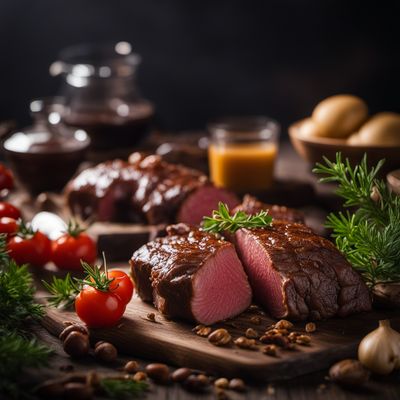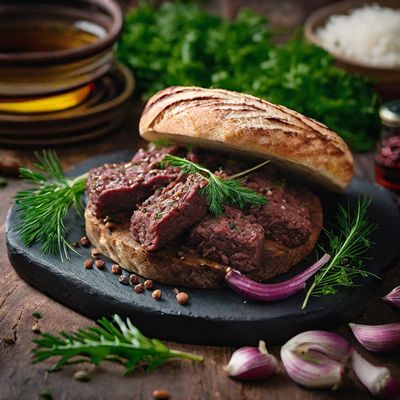
Ingredient
Deer, minced meat
Venison: The Lean and Flavorful Game Meat
Venison, or deer meat, is characterized by its deep, earthy flavor and tender texture. It has a lean profile, making it a healthier option compared to other meats. The meat is typically dark red and has a slightly gamey taste, which pairs well with bold spices and herbs. Whether used in stews, burgers, or roasts, venison brings a distinct and delicious element to any dish.
Origins and history
Venison has a long history of consumption, dating back to ancient times. It has been a staple in many cultures, including Native American, European, and Asian cuisines. In some regions, deer hunting has been an important part of traditional hunting practices and cultural rituals. Today, venison is enjoyed worldwide, with different countries showcasing their unique culinary preparations and techniques.
Nutritional information
Venison is a nutrient-dense meat that is low in fat and high in protein. It is an excellent source of iron, zinc, and vitamin B12, which are essential for energy production and maintaining a healthy immune system. Additionally, venison is lower in calories and cholesterol compared to beef or pork, making it a healthier choice for meat lovers.
How to select
When selecting venison, look for meat that is dark red and well-marbled. Avoid cuts that appear pale or have a strong odor, as this may indicate spoilage. Fresh venison should have a slightly sweet and earthy aroma. Opt for cuts that are firm to the touch and avoid any with excessive amounts of fat. If purchasing from a reputable source, inquire about the deer's diet and whether it was hunted or farm-raised.
Storage recommendations
To store venison, wrap it tightly in plastic wrap or place it in an airtight container to prevent exposure to air. Store it in the coldest part of the refrigerator, such as the meat drawer or the back of the bottom shelf. Use fresh venison within 2-3 days or freeze it for longer storage. When freezing, ensure the meat is properly wrapped to prevent freezer burn. Venison can be stored in the freezer for up to 6-9 months.
Preparation tips
Venison can be prepared in various ways, including grilling, roasting, stewing, or sautéing. Before cooking, it is recommended to marinate the meat to enhance its tenderness and flavor. Venison pairs well with bold spices, such as juniper berries, rosemary, or thyme. It can be used as a substitute for beef or lamb in many recipes, adding a unique twist to dishes like chili, burgers, or stir-fries.
Substitutions
Beef, lamb, or bison can be used as substitutes for venison, although they may not provide the same gamey flavor. However, if you're looking for a vegetarian alternative, mushrooms can be a suitable substitute, offering a similar earthy taste and texture.
Culinary uses
Venison is commonly used in various culinary applications, including stews, roasts, sausages, and burgers. It is often featured in traditional dishes like venison chili, venison Wellington, or venison jerky. In some cultures, venison is also used to make charcuterie products like salami or prosciutto. Its versatility allows it to be incorporated into a wide range of cuisines, from European game dishes to Asian stir-fries.
Availability
Venison is commonly available in regions with a significant deer population, such as North America, Europe, and parts of Asia. It is also cultivated in countries like New Zealand and Australia, where deer farming is prevalent.
More ingredients from this category

Deer, fallow fresh meat
The Delicate Delights of Fallow Deer Meat

Reindeer meat
The Arctic Delicacy

Wapiti elk meat
The Majestic Delicacy: Wapiti Elk Meat

European moose meat
The Majestic Delicacy: European Moose Meat Unveiled

Roe deer meat
Delicate Delight: Roe Deer Meat

Deer, red fresh meat
The Game-Changer: Red Deer Meat

